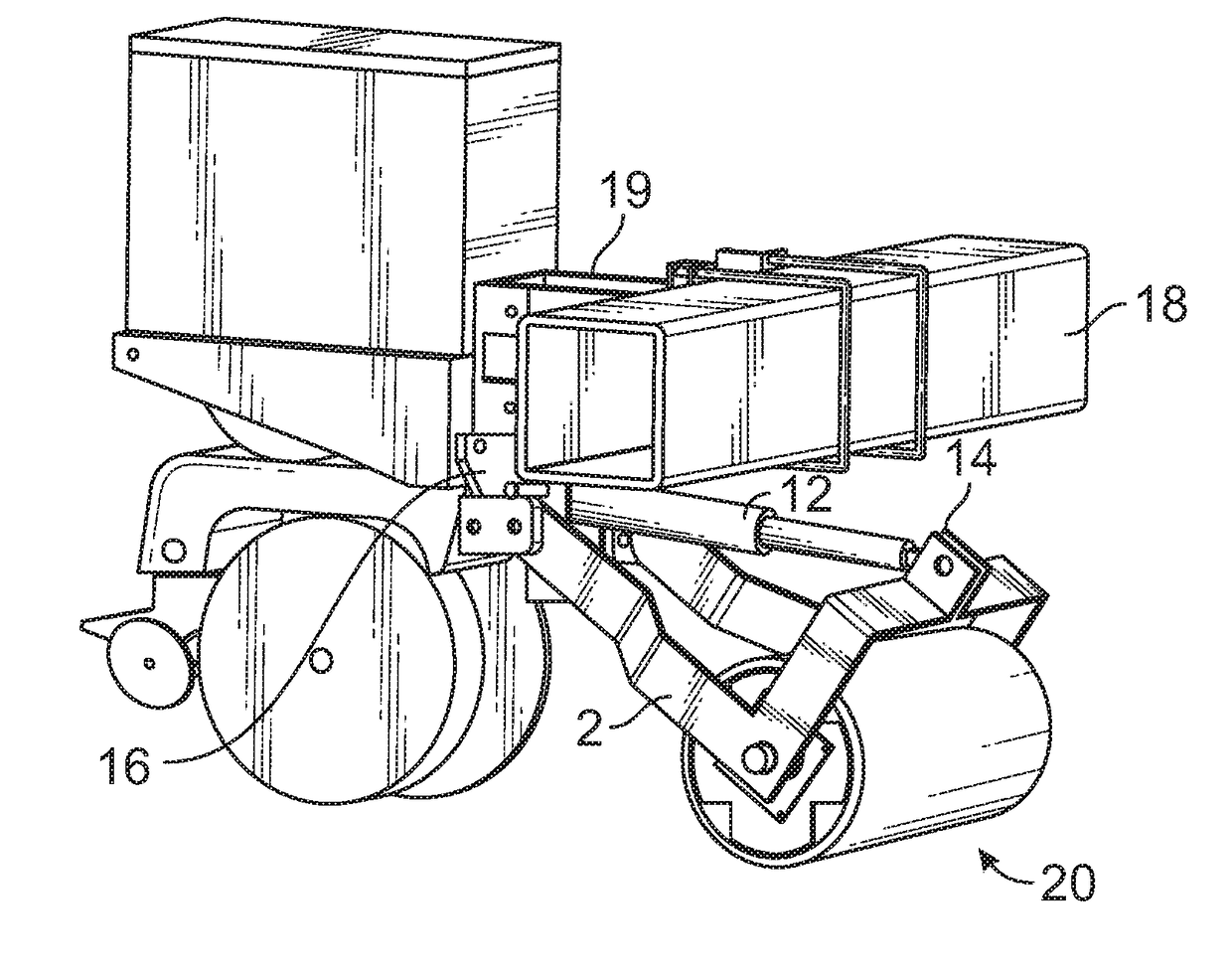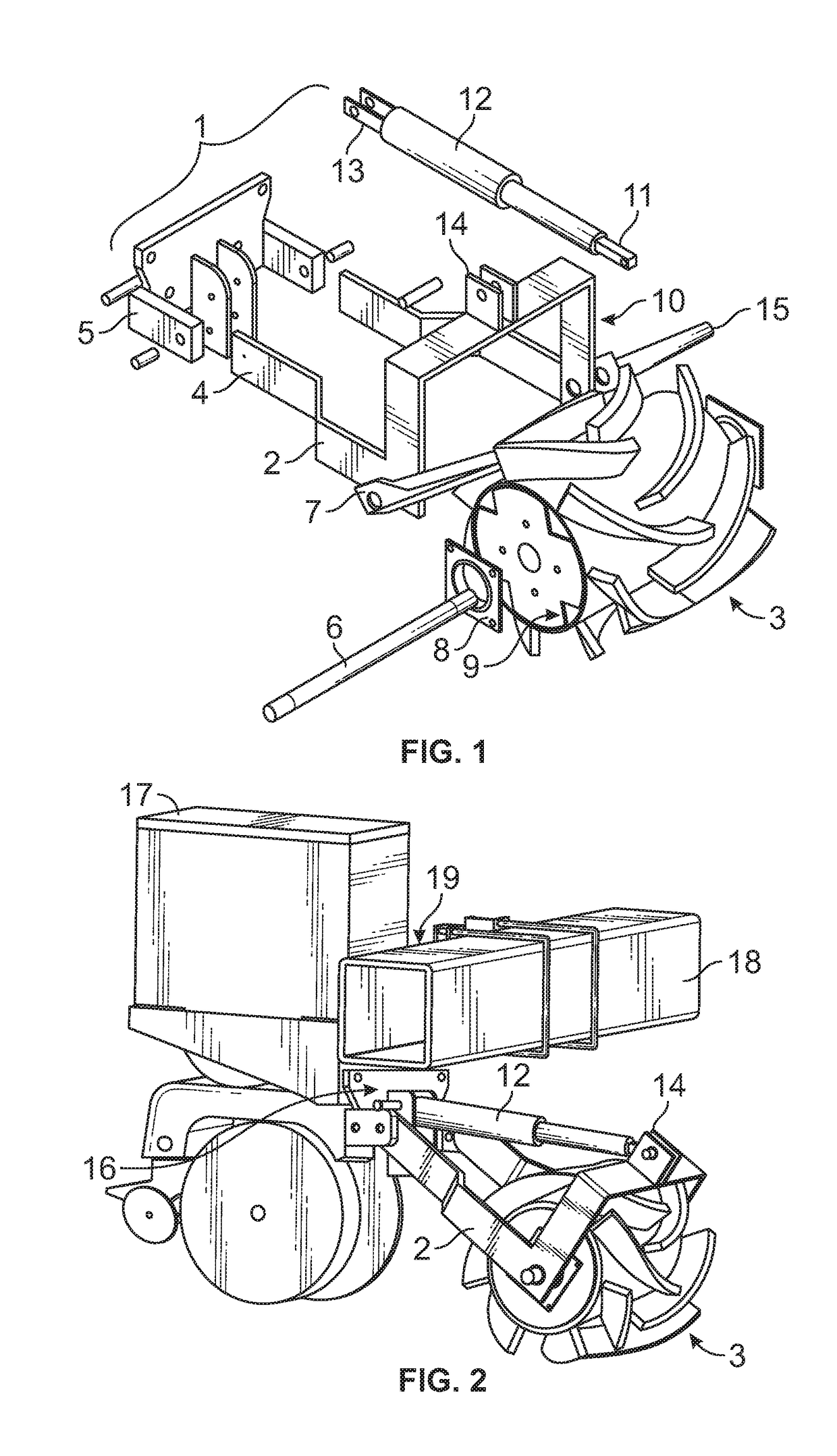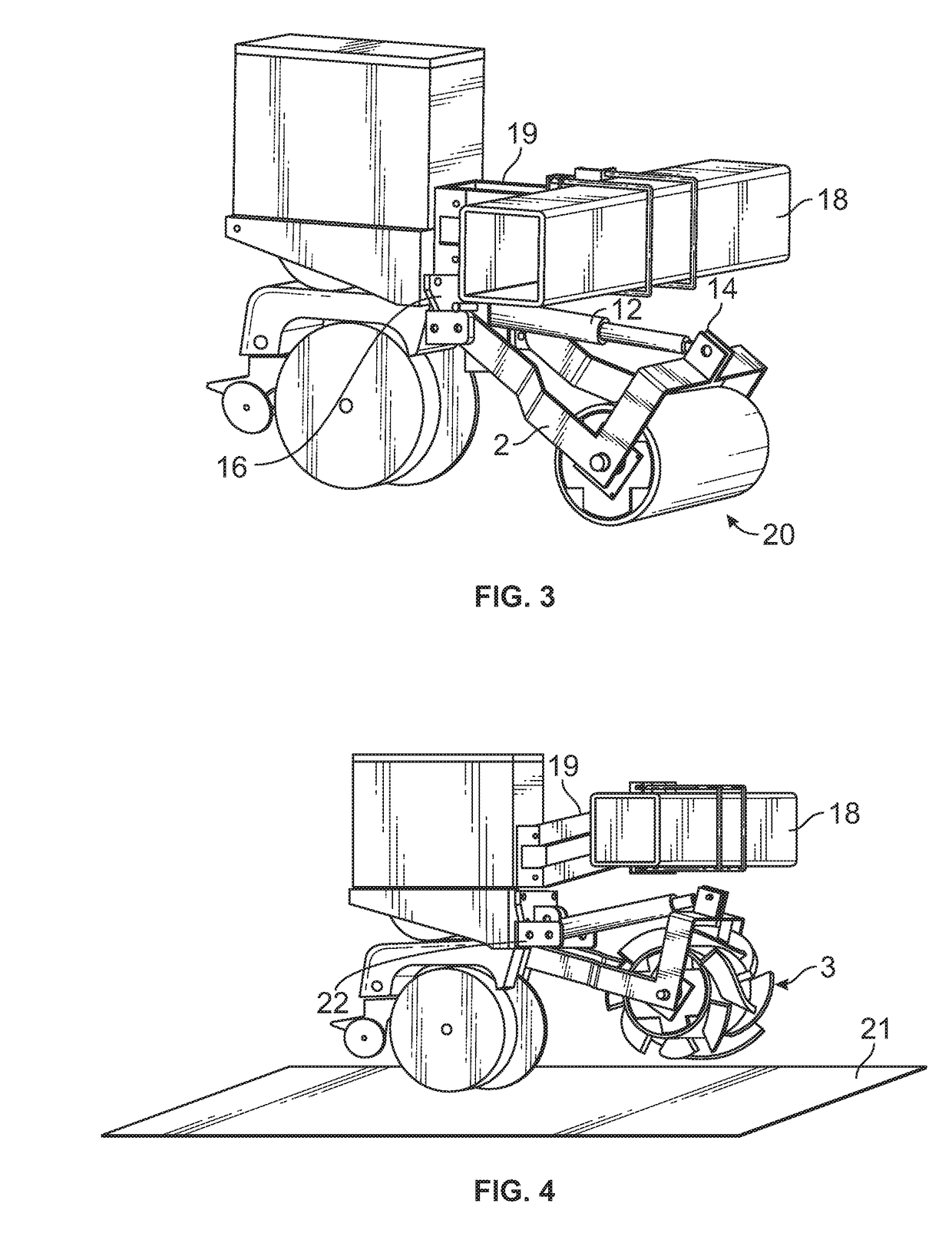Flex roller-crimper for improved management and termination of cover crops and other plant material
a crimping machine and flex roller technology, applied in the field of flex roller crimping machine for improving management and termination of cover crops and other plant materials, can solve the problems of soil compaction, severe reduction of the ability of water to filter through the soil, and no-till practices still possess problems, so as to minimize disturbance of previously rolled materials, minimize disturbance of planter operation, and minimize the effect of disturban
- Summary
- Abstract
- Description
- Claims
- Application Information
AI Technical Summary
Benefits of technology
Problems solved by technology
Method used
Image
Examples
Embodiment Construction
[0035]It should be understood that the present disclosure is to be considered as an exemplification of the present invention, and is not intended to limit the invention to the specific embodiments illustrated. It should be further understood that the title of this section of this application (“Detailed Description of the Invention”) relates to a requirement of the United States Patent Office, and should not be found to limit the subject matter disclosed herein. References made to certain directions such as “front” and “rear” are made as viewed from the frontward or rearward perspective of the flex roller-crimper system. References made to “planted row” are viewed as the area in which seeds are sewn in a line forming a row. References made to “row middle” are viewed as the areas in between two planted rows in which seeds are sewn in a line. References made to “strip unit” are describing the flex roller crimper system attached to a planter row unit, traversing over the planted row. Re...
PUM
 Login to View More
Login to View More Abstract
Description
Claims
Application Information
 Login to View More
Login to View More - R&D
- Intellectual Property
- Life Sciences
- Materials
- Tech Scout
- Unparalleled Data Quality
- Higher Quality Content
- 60% Fewer Hallucinations
Browse by: Latest US Patents, China's latest patents, Technical Efficacy Thesaurus, Application Domain, Technology Topic, Popular Technical Reports.
© 2025 PatSnap. All rights reserved.Legal|Privacy policy|Modern Slavery Act Transparency Statement|Sitemap|About US| Contact US: help@patsnap.com



